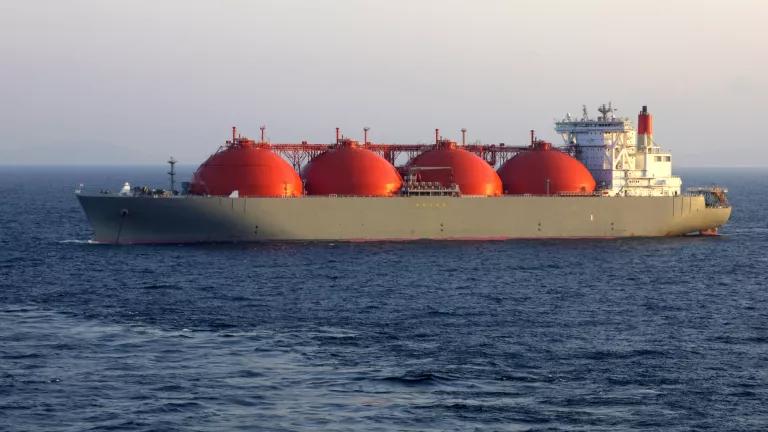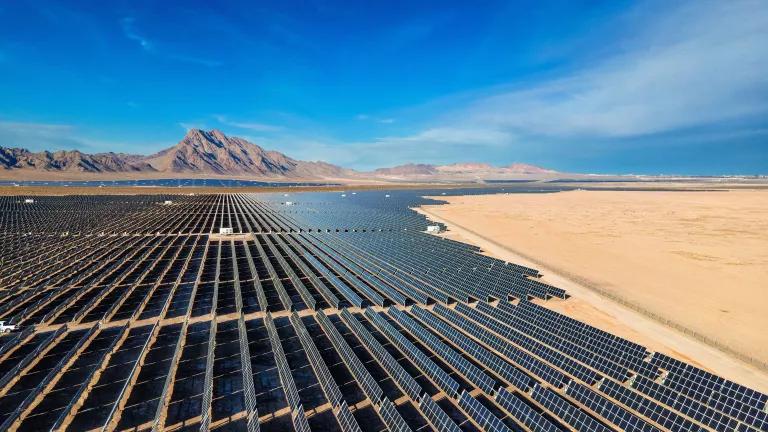Sailing to Nowhere: Liquefied Natural Gas Is Not an Effective Climate Strategy
Exporting liquefied natural gas would undercut the goal of holding warming at or below 1.5° Celsius and have devastating effects on frontline communities. The United States should instead prioritize clean energy investments, both at home and abroad.

A liquified natural gas tanker ship in Spanish waters
Oleksandr Kalinichenko/Dreamstime
Export of U.S.-produced liquefied natural gas (LNG) is rapidly expanding. Historically, gas has been considered a “bridge fuel”—cleaner and with lower carbon dioxide emissions than coal or oil—and a potential tool to help address climate change. However, this report concludes that LNG exports are not an effective climate tool, in large part because of the leakage inherent in producing the gas and the energy required to cool it and ship it.
If U.S. LNG exports increase as projected, this industry alone will generate 130 to 213 million metric tons of new greenhouse gas (GHG) emissions in the United States by 2030, equal to the annual emissions of 28 to 45 million fossil fuel-powered cars and enough to reverse the 1 percent per year decline in total U.S. GHG emissions measured during the past decade.
As this report shows, exporting LNG would undercut the goal of holding warming at or below 1.5° Celsius. It will also have devastating effects on frontline communities. The United States should instead prioritize clean energy investments, both at home and abroad.




